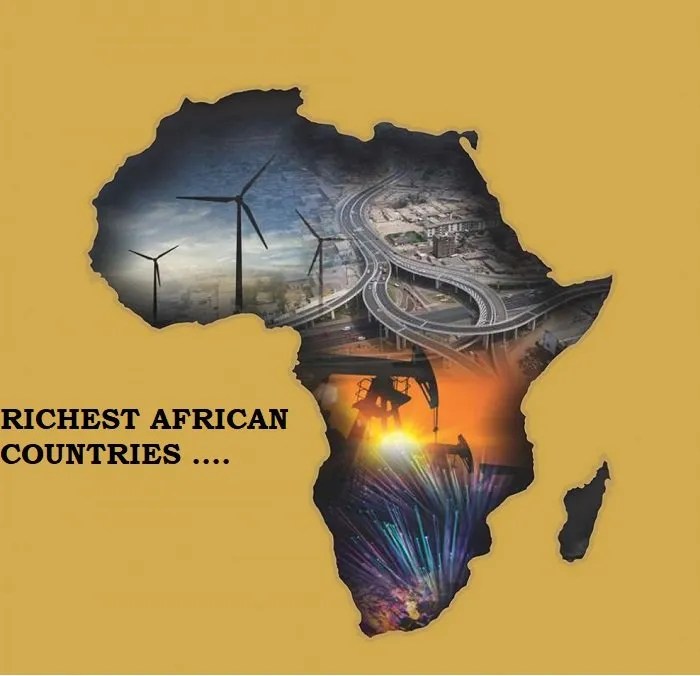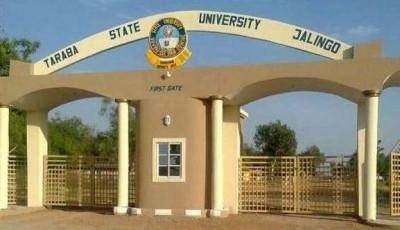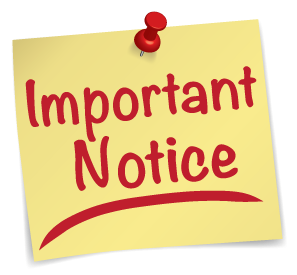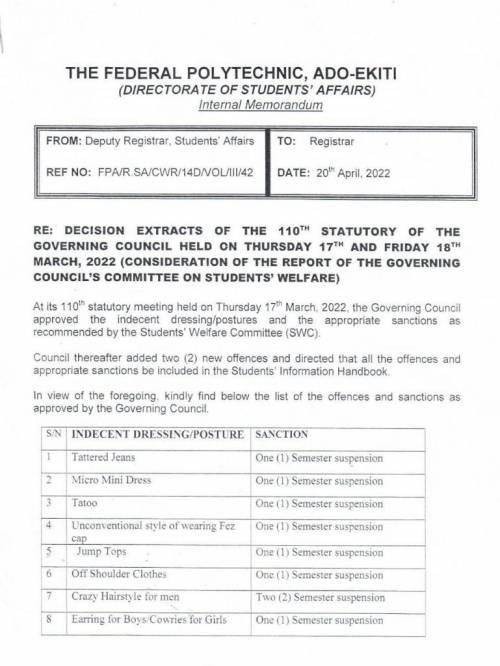
As West Africa’s population grows and its economy expands, the opportunities for businesses to trade across the region become increasingly abundant. Despite this, most countries’ economic growth rates are lagging, and poverty is still widespread. Essentially, West African farmers and businesses produce and trade in highly localized markets, failing to achieve the economies of scale needed to attract broad-based investments that could accelerate growth and reduce poverty. This is due to a variety of constraints, including inefficient transportation and trade barriers along corridors and at borders, a heavy reliance on family and informal sources of financing, and a scarcity of reliable and affordable power. As a result of these factors, West African products are uncompetitive on the global market.
Notwithstanding, West African countries have long-standing and prosperous business ties. Over time, these existing trade relationships have been formalized and expanded into significant cross-border trade along key corridors, serving as the primary source of income for many traders, particularly women, transport operators, and trade-related businesses such as hotels and restaurants. This is enabled by the exposure of West African countries to the Atlantic Ocean, and others exposed to the Sahara desert. There is lots of good fertile land seen between Sahara and the Atlantic, allowing West Africa to become an agricultural center. Aside from agriculture, there are gold, diamonds, oil, aluminum, uranium, and many other natural resources; not to mention very good ports which contribute to a great deal of wealth for some nations.
This article looks at the top 10 richest countries in West Africa using the GDP per capita (PPP) as the measurement metric.
GDP (PPP) per capita is the purchasing power parity value of all final goods and services manufactured within a country in a given year divided by the average (or mid-year) population in the same year.
When comparing generalized differences in living standards between nations, using a PPP basis is arguably more useful because PPP takes into account the relative cost of living as well as the countries’ inflation rates, rather than using only exchange rates, which may distort the true differences in income.
10 Richest Countries In Western Africa
CAPE VERDE
Cape Verde, with a GDP per capita of $8,716, is the richest country in West Africa and 119th in the world. Cape Verde, as it is officially known, is an island country off the coast of Senegal. Cape Verde is completely surrounded by the Atlantic Ocean and has a total land area of approximately 4,000 square kilometres.
As such, it is a small archipelagic nation with limited resources and a history of severe droughts. Cape Verde’s economy is service-oriented, with a focus on commerce, trade, transportation, and public services. Agriculture is difficult due to a lack of rain and is limited to only four islands for the majority of the year. Since the late 1990s, Cape Verde’s economy has been steadily growing, and it is now officially classified as a country of average development, making it only the second African country to do so, following Botswana in 1994. Cape Verde has significant economic cooperation with Portugal at all levels, leading it to link its currency (the Cape Verdean escudo) first to the Portuguese escudo and, in 1999, to the euro.
Ghana
With a GDP per capita of $7,343 Ghana is the second richest country in West Africa. The country gained independence from the United Kingdom in 1958, but prior to that, it had great kingdoms that maintained trade relations with the Arabs and Portuguese. The country has a land area of 238,535 kilometres and a population of approximately 31 million people.
Ghana’s economy has a diverse and rich resource base, which includes manufacturing, hospitality, tourism, and the exportation of diverse and rich resources such as hydrocarbons and industrial minerals. The country is also strong in agriculture, trade, and exports, which is aided greatly by its proximity to the Atlantic Ocean.
Ghana now has one of the highest GDP per capita rates in West Africa as a result of these factors. As a result of a GDP depreciation, Ghana became the world’s fastest-growing economy in 2011.
In the last ten decades, the domestic economy of Ghana was centred on services, which accounted for 50% of GDP and employed 28% of the labour force. Aside from mineral and oil-related industrialization, Ghana’s industrial development has remained basic, with plastics being a common example (such as for chairs, plastic bags, razors and pens). [19] The sector employed 53.6 per cent of Ghana’s workforce.
Nigeria
Nigeria, officially the Federal Republic of Nigeria, is a West African country located in the Atlantic Ocean between the Sahel to the north and the Gulf of Guinea to the south.
Nigeria is a country located on Africa’s western coast. This is the most populous black nation, with a population of around 200 million people. Nigeria has some land that is directly exposed to the Sahara desert, as well as a large portion of its southern land that meets the Atlantic Ocean.
Nigeria’s economy is a middle-income, mixed economy and emerging market, with expanding manufacturing, financial, service, communications, technology, and entertainment sectors, contributing to a GDP per capita of $6,172, making it the third richest country in West Africa.
Despite official GDP figures of 6,172, the vast majority of Nigerians are impoverished. Violence and political unrest have had a significant impact on commercial activity; farming is frequently disrupted. Despite this, Nigeria has some of the world’s most enterprising people; Nigeria has one of the highest rates of self-employment. Agriculture, transportation, oil exploration, shipping, food production, retail sales, and manufacturing are just a few of the economic activities that thrive in Nigeria.
Mauritania
Mauritania is a sovereign state in Northwest Africa. It is bounded on the west by the Atlantic Ocean, on the north and northwest by Western Sahara, on the northeast by Algeria, on the east and southeast by Mali, and on the southwest by Senegal. Mauritania is Africa’s eleventh largest country, with the Sahara covering 90% of its land area. The majority of the country’s 4.4 million people live in the temperate south, with roughly one-third concentrated in the capital and largest city, Nouakchott, on the Atlantic coast.
With a GDP per capita of $5,158, it is the fourth wealthiest country in West Africa. Mauritania’s people are ancient nomadic people who gradually abandoned their nomadic way of life. Although Arabic is the most widely spoken language, the country was colonized by the French.
Agriculture and livestock are the foundations of the country’s economy, and mining (particularly iron ore), petroleum, and fishing are major industries.
Iron ore deposits in Mauritania are extensive, accounting for nearly half of total exports. However, due to a drop in global demand for this ore, production has been curtailed. Because of the current increase in metal prices, gold and copper mining companies are expanding into the interior.
The country’s coastal waters are among the richest in the world for fishing, but overfishing by foreigners threatens this vital source of revenue. In 1986, the country’s first deepwater port opened near Nouakchott.
Drought and economic mismanagement have resulted in a buildup of foreign debt in recent years.
Senegal
Senegal is a West African country, officially known as the Republic of Senegal. Senegal has one of its borders with Mauritania to the north, then another with Mali to the east, also Guinea to the southeast, and finally Guinea-Bissau to the southwest. Senegal almost completely encircles The Gambia, a country that occupies a narrow sliver of land along the banks of the Gambia River, which separates Senegal’s southern region of Casamance from the rest of the country. Senegal also has a maritime border with the island of Cape Verde. Senegal is the next country on our list, with a GDP (PPP) per capita of $4,079.
Despite abundant natural resources such as iron, zircon, gas, gold, phosphates, and recent oil discoveries, Senegal’s economy is driven by mining, construction, tourism, fishing, and agriculture, which are the main sources of employment in rural areas. Senegal’s economy has a majority of its gains on its foreign exchange from phosphates, fish, groundnuts, services and tourism.As one of the dominant parts of the economy, the agricultural sector of Senegal is highly vulnerable to environmental conditions, such as variations in rainfall and climate change, and changes in world commodity prices.
Despite having one of the best-developed tourist industries in Africa, Senegal’s economy depends on foreign assistance.
Senegal is a poor country with a high level of debt and a low Human Development Index.
Côte d’Ivoire
Ivory Coast, also known as Côte d’Ivoire, and officially the Republic of Côte d’Ivoire, is a country on West Africa’s southern coast. It is bordered by Guinea to the northwest, Liberia to the west, Mali to the northwest, Burkina Faso to the northeast, Ghana to the east, and the Gulf of Guinea to the south (Atlantic Ocean).
Following decades of political unrest, the Ivory Coast’s economy is now stable and growing. The Ivory Coast’s economy, which now has a GDP per capita of $4,754, is largely market-based and heavily reliant on agriculture, shipping, oil production, mining, and service industries like hospitality, tourism, and financial services. Almost 70% of the Ivorian population is involved in some form of agriculture.
After several years of under-performance, the Ivorian economy began to recover, thanks to the depreciation of the CFA franc and higher cocoa and coffee prices, growth in non-traditional primary exports like rubber, limited trade and financial liberalization, offshore oil and gas finds, and significant external finance and debt rescheduling by international lenders and France.
Ivory Coast is vital to its landlocked neighbours, who receive a large portion of their imports through Ivorian seaports. Ivory Coast is one of the world’s largest cocoa producers, as well as a major producer of rubber, groundnuts, and other cash crops.
The Gambia
The Gambia, officially the Republic of The Gambia, is a West African country. Except for its western coast on the Atlantic Ocean, it is the smallest country on the African mainland and is surrounded by Senegal. The Gambia is situated on both banks of the Gambian River and it flows through the heart of the nation and discharges further into the Atlantic Ocean.
The Gambia’s economy, worth $2,892 per capita, is dominated by farming, fishing, and, most notably, tourism. In 2015, 48.6 per cent of the population was impoverished. Poverty is even more prevalent in rural areas, accounting for nearly 70% of all residents.
The Gambia’s economy is heavily dependent on agriculture. The Gambia has no significant mineral or other natural resources and a limited agricultural base. Crops and livestock provide a living for roughly 75% of the population. Small-scale manufacturing includes the processing of peanuts, fish, and animal hides.
Agriculture generates 23% of GDP and employs 75% of the workforce. Peanut production accounts for 5.3 per cent of GDP, while other crops account for 8.3 per cent, livestock accounts for 4.4 per cent, fishing accounts for 1.8 per cent, and forestry accounts for 0.5 per cent.
The industry generates 12% of GDP. Manufacturing is responsible for 6% of GDP. Agriculture accounts for the majority of the limited manufacturing (e.g., peanut processing, bakeries, a brewery, and a tannery). Soap, soft drinks, and clothing are among the other products manufactured. Services make up 19% of GDP.
Short-run economic progress is still heavily reliant on foreign aid and responsible government economic management as directed by technical assistance and advice from the International Monetary Fund.
Guinea
Guinea is a West African coastal country, officially known as the Republic of Guinea. Guinea is bordered on the west by the Atlantic Ocean, on the northwest by Guinea-Bissau, on the north by Senegal, on the northeast by Mali, on the southeast by Cote d’Ivoire, and on the south by Sierra Leone and Liberia. Formerly known as French Guinea, the modern country is also known as Guinea-Conakry after its capital Conakry, to distinguish it from other territories in the eponymous region, such as Guinea-Bissau and Equatorial Guinea.
Guinea’s economy is heavily reliant on agriculture and other rural activities, which account for the country’s $2,574 GDP per capita. Guinea has an estimated quarter of the world’s proven bauxite reserves, more than 1.8 billion tonnes of high-grade iron ore, significant diamond and gold deposits, and undetermined quantities of uranium.
Guinea has significant growth potential in the agricultural and fishing sectors as well. Large-scale irrigated farming and agroindustry are made possible by land, water, and climatic conditions. The rest of Guinea’s foreign exchange industry is made up of remittances from Guineans living and working abroad, as well as coffee exports.
Mali
Mali is a landlocked country in West Africa, officially known as the Republic of Mali. With an area of over 1,240,000 square kilometres, Mali is Africa’s eighth-largest country (480,000 sq mi). Mali’s borders extend deep into the Sahara Desert to the north. The majority of the country’s population lives in the Sudanian savanna, and the Niger and Senegal rivers run through it.
Agriculture and mining are the backbones of the country’s economy and they account for its $2,569 GDP per capita. Agricultural activities employ 70% of Mali’s workforce and generate 42% of the country’s GDP. Cotton and livestock account for 75–80 per cent of Mali’s annual exports. The agricultural sector is dominated by small-scale traditional farming, with subsistence farming (of cereals, primarily sorghum, pearl millet, and maize) covering approximately 90% of the 14,000 square kilometres (1,400,000 ha; 3,500,000 acres) under cultivation.
Gold is one of Mali’s most important natural resources, and the country is the African continent’s third-largest producer of metal. It is also a salt exporter.
Mali is one of the world’s poorest countries, one of the 37 Heavily Indebted Poor Countries, and a major recipient of foreign aid from a variety of sources, including multilateral organizations and bilateral programs funded by the European Union, France, the United States, Canada, the Netherlands, and Germany.
Guinea-Bissau
Guinea-Bissau, officially the Republic of Guinea-Bissau, is a country in West Africa with a land area of 36,125 square kilometres (13,948 square miles) and a population of 1,726,000 people. It shares borders with Senegal to the north and Guinea to the south.
Guinea-Bissau economy is a mix of state-owned and private enterprises. It has a GDP per capita of $2,113, is one of the world’s least developed countries, and is one of the ten poorest countries in the world, relying primarily on agriculture and fishing. Cashew crops have grown dramatically in recent years, with the country ranking ninth in cashew production in 2019.
These countries which are said to be from the same region, which is the West Sub-Saharan part of Africa, are considered to be the main engines or drivers of growth in this region and in Africa. These countries have developed from what they were twenty to thirty years ago and look to be placing West-Africa on strategic points in the map of the world.




